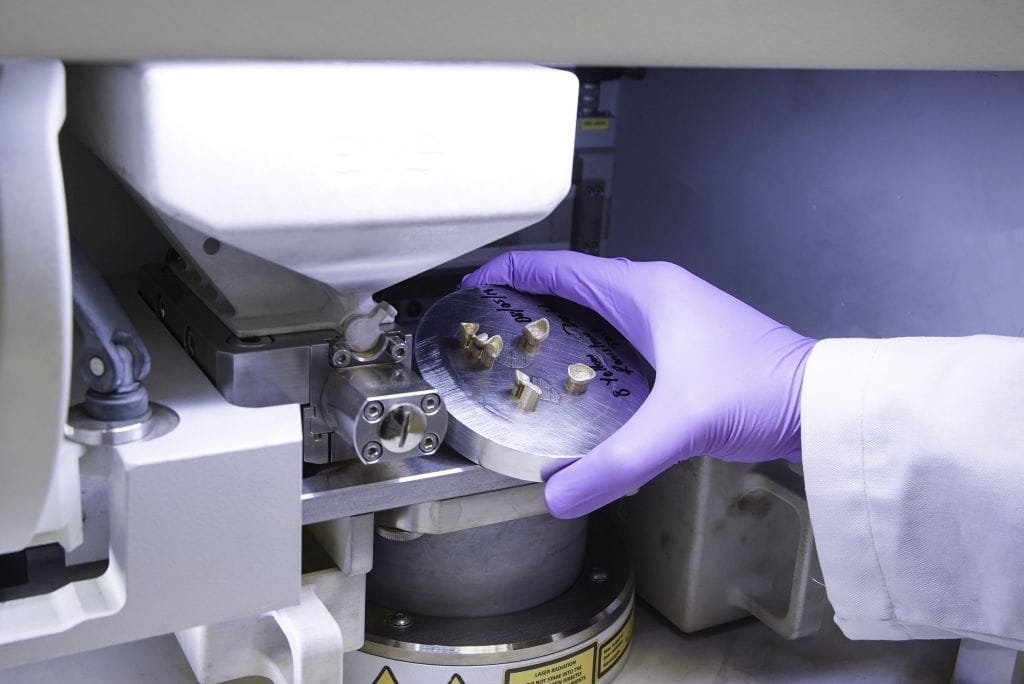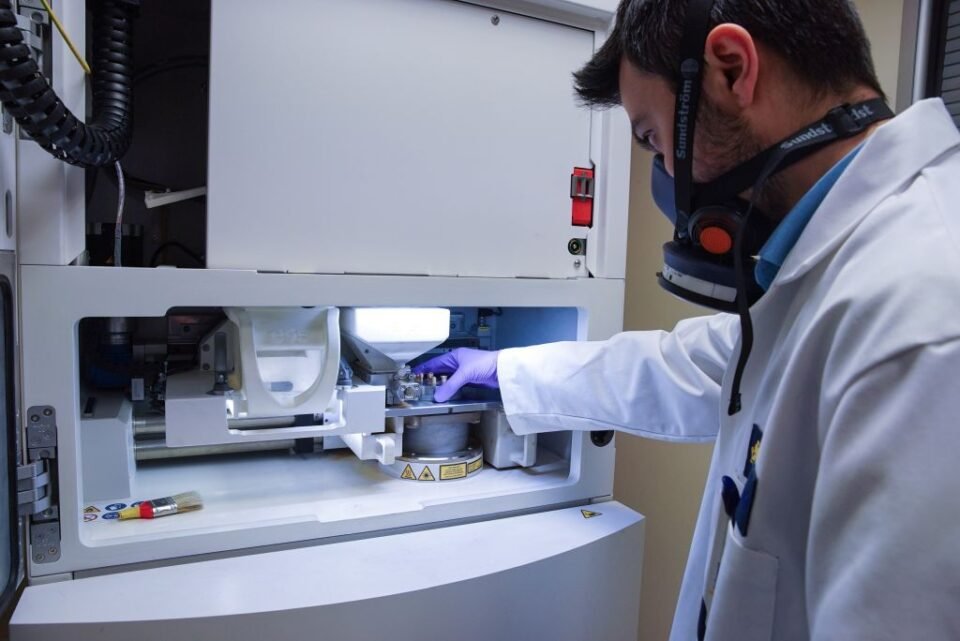
Selassie Dorvlo, technical & production director at Cookson Industrial looks at how new additive techniques are unlocking the next era of aerospace research.
On paper, fine jewellery and space engineering don’t seem to share much in common. One is considered more of an artform and the other a science.
It’s only when you look at precious metals that the connection becomes clearer. And now, with the latest developments in additive manufacturing (AM), you can essentially draw a direct line between the two.
This is a new area of research and development. Businesses with a history handling precious metals are now being asked to design, develop and deliver printed parts for use in some of the most extreme and technically challenging environments found anywhere on earth – and beyond. Without the right knowledge and production capabilities, however, this process is incredibly challenging. So, what does best practice look like?
High barriers of entry
The connection between jewellery and space is less surprising when looking at the special properties of many precious metals. Take platinum. It has a very high melting point, is chemically inert and also highly resistant to corrosion and oxidation.
These properties are desirable for consumers but critical for engineering applications. Space propulsion offers a case in point. Exposed parts, such as a combustion chamber and internal catalyst lattice, must be capable of withstanding the high temperatures and oxygen-rich conditions found when thrusters fire up during a launch. Any materials used must be stable and predictable when subjected to these stresses, otherwise entire missions could be jeopardised.

This is just one example. Platinum and other precious metals are also an ideal match for electrical systems, thermal controls, radiation protection and even fuel cells.
Yet, for all their use, precious metals have a high barrier of entry. They are – on the whole – incredibly expensive and even minor material losses from poor handling can lead to huge costs. To put it in context, five kilos of platinum loaded into the machine – roughly the amount required to print 6-8g parts – will cost in the region of £140,000. Even if a project were to lose a fraction of this total material during the R&D or manufacturing process, the balance could easily run into the thousands.
Given that a large amount of space engineering is state-funded, there’s a need to justify and manage every expense. But the same applies for private enterprise because a team will still be spending a significant amount on one small part within a much larger design. The trouble is R&D is often a staged process and prototypes aren’t guaranteed to work first time.
From here it’s easy to see why organisations with established history in precious metals can offer so much. They already have the machinery to create precious metal AM parts to a high degree of accuracy, as well the knowledge to minimise waste during production. In the case of Cookson Industrial, the company is also able to source all of its raw material sustainably, without having to rely on mines or the secondary market. This has been advantageous in recent years with the cost per gram for some metals, such as rhodium and iridium, fluctuating by as much as 500%.
Minimising material losses
The latest advances in AM have been nothing short of game-changing for the use of precious metals in space. In raw form, these materials are very difficult to manufacture using traditional methods as a fully dense structure is difficult to achieve. By its nature, subtractive manufacturing also creates a higher volume of waste and off-cuts, making it unsuitable for projects where the starting cost for production is already very high.
But there are also practical challenges. With platinum, welding, casting or brazing intricate shapes is very challenging. And it’s also difficult to hollow out – a key method for minimising weight in aerospace projects. This is not a problem with AM as the starting material is fundamentally different and parts are produced using only the exact amount needed.
Platinum is an advantageous material for AM, with densities of 99.9% easily achievable. But the right experience and in-house knowledge is needed to manufacture the right part at the right cost. Cookson, for instance, has extensive capabilities in alloy development given its background. Depending on a customer’s requirements, the company can choose from a standard selection of in-stock alloys or develop an entirely new one suited to the application in question. These alloys can use precious metals, such as rhodium or iridium, or non-precious metals in their makeup. They are then atomised into a powder suitable for AM and printed according to specified geometries. Working this way makes it far easier to produce complex designs that would otherwise be unattainable when using traditional methods. That is, unless a team is willing to invest a huge amount of time and money.
Still, AM on its own is not enough. Powdered precious metals are much harder to process effectively without the right tools. The risk of loss is still high – except at this point the amount of precious metal that could send a project into the red is effectively microscopic. Without the right control measures in place, a project could easily lose 10% or more of its powdered precious metal. An unworkable scenario.
Propelling new propulsion
This is a problem some organisations have faced when developing their own precious metal AM parts. And it’s the main reason why businesses like Cookson are now being brought into the fold. Cookson’s industrial division has invested heavily into its AM production and control measures in recent years, and this along with a long history in precious metals has drawn the attentions of major players in the aerospace sector.
One of the business’s standout projects has focused on the development of in-space water propulsion, using a platinum insert as the catalyst for a hydrogen-oxygen thruster. These so-called ‘green thrusters’ have received a lot of attention and investment in recent years. To date, there are none operational in space but there are hundreds of organisations working to launch the first. Green thrusters are deemed preferable to existing designs because they avoid the use of highly toxic liquid propellants.
The customer’s first design iteration required manufacturing in stages, with four individual components and two brazing steps. Working with the in-house team, Cookson was able to optimise the material selection and the design’s readiness for AM. This work resulted in a single printed design, using self-supported latticed structures.
Self-supporting structures allow highly complex parts to be manufactured quickly and accurately, whereas it is nearly impossible to manufacture the same parts traditionally – i.e. with CNC machining, welding and casting. Platinum is a particularly strong candidate material for small satellite thruster applications due to a melting point around 1,768°C (3,214°F), making it highly resistant to extreme temperatures. Its oxidation resistance and chemical inertness also ensure longevity as there is a much smaller chance of degradation or adverse reactions with other materials.
Beyond the tight turnaround time, the most impressive aspect of Cookson’s recent project was its cost-effectiveness. The company’s machines, which are specially modified to capture as much powdered material as possible, were able to keep material losses to less than 1%. Without the right processes in place – and knowledge of how to develop AM parts for critical environments – this figure is very difficult to achieve.
Much is written about the breakthrough capabilities of AM, though in some sectors it’s still held back by ongoing testing. While aerospace is also subject to regulation, the industry is arguably in a stronger position with the support of companies like Cookson, which has over a century of experience in metallurgy and manufacturing. The outcome is a rare form of collaboration, bringing together one industry that’s innately tied to the earth and another that’s pushing at the limits of exploration beyond it.

